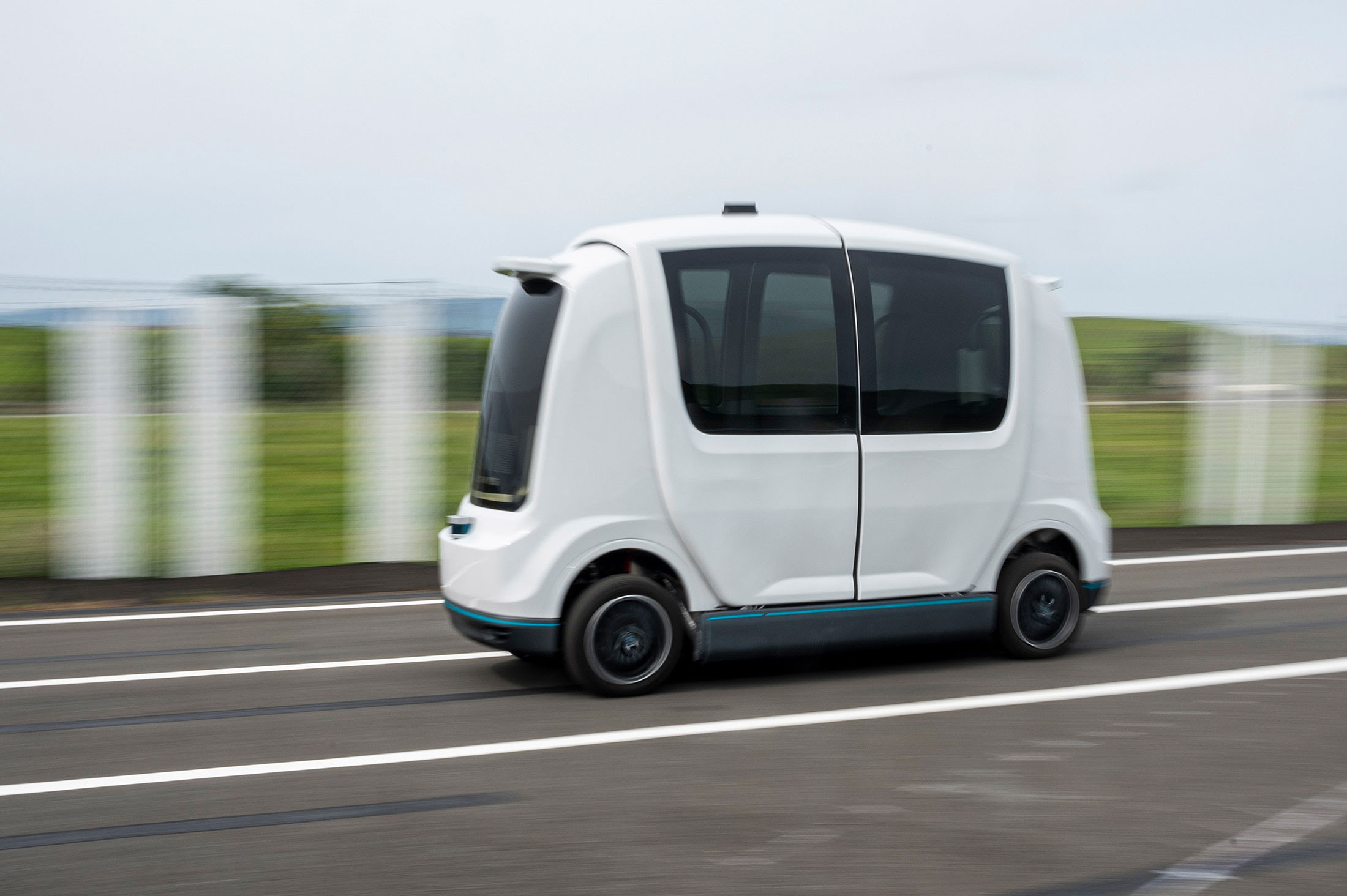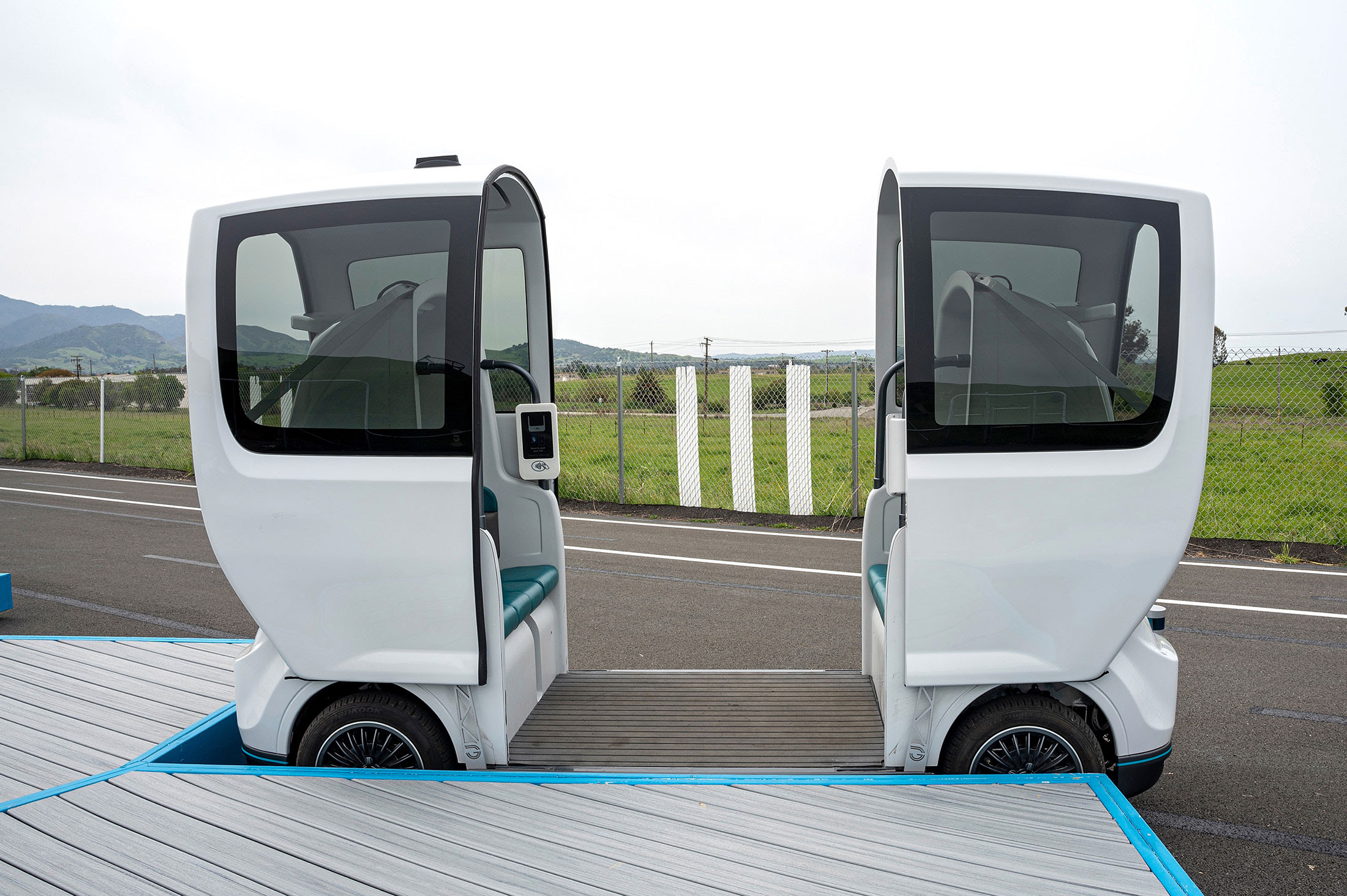Thanks for reading Hyperdrive, Bloomberg’s newsletter on what’s reshaping the auto world. Read today’s featured story online here. Where Robocars Are Going, They’ll Need Roads |
On Tuesday, the central Silicon Valley city of San Jose, California, made a surprising choice: It granted initial authorization for a plan to develop a network of autonomous cars that will need their own dedicated roads. The system, known as personal rapid transit, or PRT, will feature sleek four-person electric pods that ferry passengers between San Jose Mineta International Airport and the city’s central Diridon Station, which serves as a hub for regional transit and maybe, one day, California’s beleaguered high-speed rail project. If everything goes according to plan, cars reminiscent of the angular coupe that Tom Cruise escaped from in Steven Spielberg’s Minority Report could be zooming on narrow paths running alongside traffic-clogged roads as soon as 2028. San Jose’s decision is a repudiation of both more conventional mass-transit options, such as buses and subways, and the orthodoxy in artificial intelligence circles that fleets of autonomous cars will soon be suitable for public roads. After the city began soliciting proposals for an airport connector in 2019, officials received 21 responses, including bids from companies developing electric buses, trams and automated minibuses. One came in from Elon Musk’s Boring Company to dig a tunnel between the airport and the train station for the self-driving cars that the Tesla boss has predicted — year after year — are just around the corner.  A prototype Glydcar autonomous vehicle at the company’s testing facility in Concord, California. Photographer: David Paul Morris/Bloomberg Instead, the city selected a team led by developer Plenary Americas and Glydways, an untested seven-year-old startup based in South San Francisco. The companies pitched a network of automated cars that operate on 5.5-foot-wide paths instead of the typical 12-foot-wide lanes on streets. City officials were intrigued by the novelty, efficiency and low carbon footprint of the project — as well as the promised savings relative to building conventional mass transit. “What is potentially exciting is taking a project that in other cities has cost multiple billions and structuring it around new technology and a public-private partnership,” says San Jose Mayor Matt Mahan. “In a sprawling city like San Jose, local light rail is a tough proposition.” The idea behind PRT as an alternative to cramming people into subway cars or trams has been kicking around for the last half-century. PRT involves small, automated pod-like cars or mini-trains, operating in tight formation, merging and de-merging to ferry people between stations on a network of roads separated from regular car and pedestrian traffic. In the 1960s, researchers at the congressionally funded nonprofit Aerospace studied the notion and published a book about it. In a 1972 speech to Congress, President Richard Nixon lobbied for federal PRT development, arguing, “If we can send three men to the moon 200,000 miles away, we should be able to move 200,000 people to work three miles away.” But the attention never led to anything beyond a few demos at various transportation expos. Even today, there are only a few PRT networks in use, including one at Heathrow Airport in London and another in Dubai. Mark Seeger, an engineer and entrepreneur, founded Glydways in 2016 to change that. The company believes that conventional public transit has become too costly to build and operate. (Exhibits A and B: the 2.25-mile Automated People Mover at LAX and the 1.5-mile Central Subway extension in San Francisco, which cost about $2 billion each to construct.) Glydways predicts its three-mile airport connector in San Jose will cost less than quarter of that, and unlike every other mass-transit system in the world, it will turn a profit, in part because it’s closely attuned to demand. Instead of running half-empty trains or buses at 2 a.m., Glydways’s bidirectional pods — a ride will cost about $6 — operate only when passengers summon them with a smartphone app.  According to the current plans, rides will cost about $6. Photographer: David Paul Morris/Bloomberg Only 4% of cities with the population and density to require mass-transit systems such as subways and trams have them, says Seeger, speaking outside the company’s test track at a decommissioned naval base in Concord, California, where its pods roam between three dummy stations, their doors butterflying out to allow test riders aboard. “If we’re able to double that to 8%, imagine what life will look like for another 50 to 80 million people. We’re going to move the needle on the human experience.” Glydways’s primary backer, venture capitalist Vinod Khosla, is equally rapturous discussing the potential of PRT. A co-founder of Sun Microsystems and an investor in such companies as Stripe, DoorDash and OpenAI, Khosla wrote a paper on his 60th birthday in 2015 that included a paean to autonomous electric cars operating on private roads in an on-demand network. He met Seeger a few years later and transferred his own PRT patents to the startup, which has so far raised $40 million, with Khosla Ventures as the majority investor. (The firm also backed Hyperloop One, another novel transit idea that’s failed to live up to its initial hype.) If they’re widely deployed, self-driving cars from companies such as Waymo and Cruise will only increase congestion on regular roads, Khosla argues. They “solve the individual problem but make the societal problem much worse,” he says. “They also have to handle every circumstance including chickens crossing the road. We greatly reduce the problem in complexity and with much cheaper vehicles.” A lot still must happen for these PRT dreams to come true. The San Jose City Council has authorized what’s called a “predevelopment agreement” with Plenary Americas, Glydways and their partners. Next up are environmental and engineering reviews, as well as a validation report in which the companies and the city will jointly review the business case. These steps can bedevil any mass-transit project. Glydways is also bidding for projects in San Bernardino and Contra Costa County in California, and exploring other projects around the world. At least some transportation analysts are optimistic that PRT’s moment may have finally come. “Full self-driving isn’t ready for prime time, despite what Elon Musk wants you to believe,” says Nidhi Kalra, a senior information scientist at Rand Corporation. The Glydways proposal “may be a little bit of a litmus test for doing some things differently.” — By Brad Stone | 




No comments:
Post a Comment